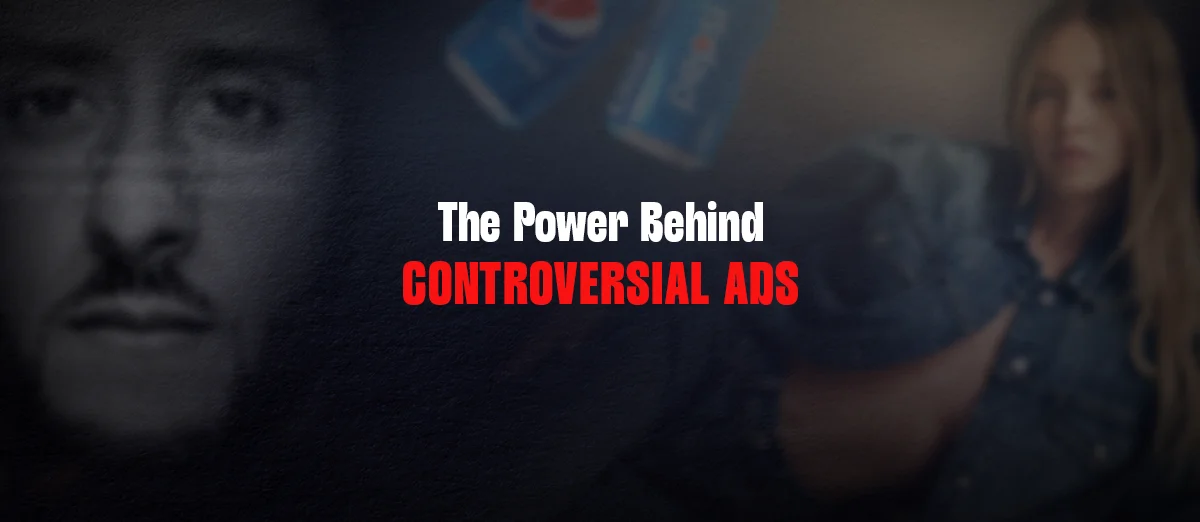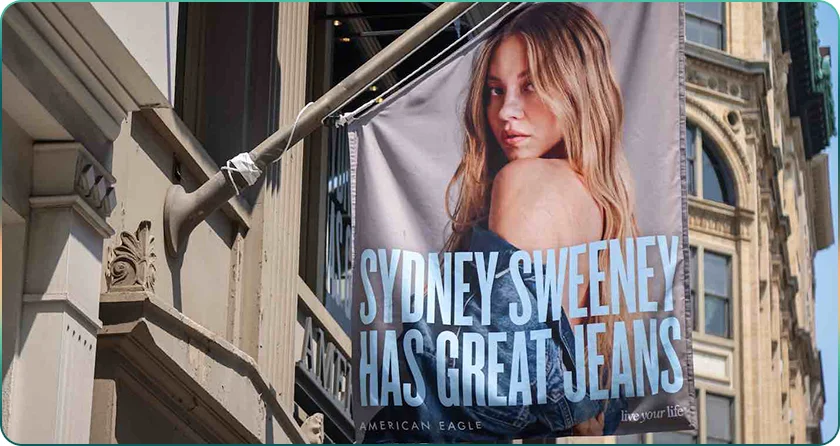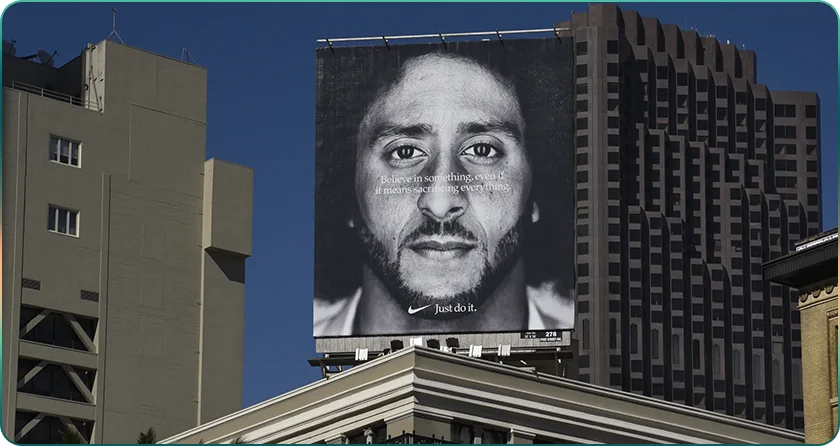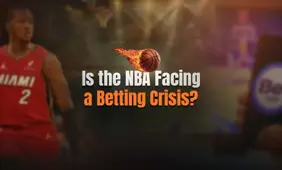When Ads Are a Gamble: Controversial Commercials That Risked It All

From eugenics-allusion advertising to confrontational social messages, brands occasionally court backlash for attention. After American Eagle’s Sydney Sweeney-fronted “great jeans/genes” campaign, this is how edgy ads are high-stakes bets: sometimes foolish, often lucrative.
In early August, the Sydney Sweeney ad for American Eagle ignited a tidal wave of commentary, less for its denim appeal than for its wordplay. The slogan “great jeans” quickly morphed online into “great genes,” drawing accusations of endorsed eugenics and prompting hot takes across social media and mainstream outlets. Still, behind the outrage and rapid-fire think-pieces, American Eagle quietly rode the storm, with its share price going up and sales reportedly rising amid the buzz.
But American Eagle ad with Sudney Sweeney is far from the first time an advertisement has been made into a cultural controversy. From splashy Super Bowl stunts to shock-value campaigns on social justice, brands have long flirted with backlash as a marketing strategy or a miscalculated gamble. These promotional gambits – where reputation is risked for virality – are increasingly a high-stakes game all their own.
In that spirit, let’s explore some of the most controversial ads: daring campaigns that deploy controversy to grab attention, ignite debate, or reshape a brand. Drawing parallels from Pepsi’s infamous protest-style ad, Gillette’s “toxic masculinity” stance, Benetton’s photojournalistic provocations, and beyond, we’ll trace how publicity – whether earned or not – can arise from a single ill-timed headline or intentionally edgy message. These moments, like the Sydney Sweeney ad, suggest that in marketing, controversy isn’t just noise; it’s a tactic.
The Sydney Sweeney American Eagle Ad: A Calculated Risk
In August 2025, American Eagle found itself at the center of a social media firestorm after debuting a new campaign featuring actress Sydney Sweeney. The ad – bright, nostalgic, and firmly rooted in Americana aesthetics – should have been a straightforward feel-good marketing moment. Instead, it quickly became a magnet for debate, with detractors accusing the imagery of promoting “eugenics” because of the way it paired a blonde-haired, blue-eyed woman with talk of her favorable genealogy.
While the term was an extreme and arguably misplaced leap, its presence in online discourse amplified the controversy far beyond the brand’s usual reach. The campaign was dissected on TikTok, Twitter (X) and Instagram, sparking think-pieces and heated comment threads. In the space of a week, it became less a clothing advert and more a cultural flashpoint.
For American Eagle, the timing and the choice of Sweeney – a rising star with a huge Gen Z and millennial fanbase – was no accident. The brand has been working to revitalize its image and expand its audience beyond its mall-retail roots. This campaign, with its provocative conversation-starter effect, achieved exactly that.
Despite the criticism, the numbers told a different story. According to retail analysts, American Eagle saw a surge in online engagement and website traffic in the days following the release of what some people would call an inappropriate ad. Shares of its parent company, AEO Inc., ticked upward, suggesting that, whatever the chatter online, investor sentiment remained optimistic.
The company’s official response was brief but pointed, defending the creative direction and praising Sweeney’s professionalism. Without directly addressing the more far-fetched accusations, the brand effectively let the wave of conversation keep rolling, an approach that mirrors many modern marketing strategies: lean into the noise, because noise means attention.

A Brief History of Controversial Ads
Advertising has always flirted with the edges of public taste, and in many cases, brands have deliberately stepped over the line to spark debate. In an attention economy, outrage can be as valuable as admiration, a fact marketing teams have exploited for decades.
Some of the earliest examples of controversy-as-strategy came from Benetton in the 1980s and ’90s. Under photographer Oliviero Toscani, the brand’s campaigns featured shocking imagery – from a newborn baby still attached to its umbilical cord to an image of a man dying of AIDS – designed to provoke as much as to sell. While the ads drew condemnation from politicians and parent groups, with some even ending up as banned commercials, they cemented Benetton’s reputation for fearless, conversation-driving marketing.
Nike has also mastered this balancing act. In 2018, the brand tapped NFL quarterback Colin Kaepernick, known for kneeling during the national anthem in protest against racial inequality in the United States, for its “Just Do It” 30th anniversary campaign. Critics called for boycotts, and some burned their Nike trainers in protest, but sales jumped by over 30% in the days following the ad’s release. The gamble paid off.
Super Bowl ads, with their astronomical airtime costs, have long been fertile ground for calculated risk-taking. From GoDaddy’s suggestive campaigns in the early 2000s to the infamous 2022 Coinbase bouncing QR code (which many found baffling but nonetheless drove record traffic), the goal has often been the same: do something so unexpected – or divisive – that it dominates Monday morning conversations.
The Pepsi and Kendall Jenner fiasco of 2017 showed the risk of overreaching. Attempting to tap into the spirit of protest movements, the ad depicted Jenner handing a can of Pepsi to a police officer during a tense demonstration, imagery many saw as trivializing serious issues. The backlash was swift, and the ad was pulled within 24 hours, adding it to the list of banned ads that have sparked public debate. Yet, even in failure, it became one of the most talked-about commercials of the decade.
These examples share a through-line: controversial marketing strategies. Whether the reception is positive or negative, the conversation itself often proves more valuable than the product placement.
Other Notable Examples of Controversial Marketing Campaigns
Some brands don’t just dip a toe into controversy; they dive headfirst.
In 2019, Gillette released “The Best Men Can Be,” an ad that tackled toxic masculinity, bullying, and sexual harassment. While praised by some as socially responsible, it was criticized by others as preachy or hypocritical, with detractors pointing to Gillette’s history of reinforcing gender stereotypes. Social media lit up with calls to boycott the brand, yet Gillette’s parent company, Procter & Gamble, reported that the campaign generated more than 110 million views within a month, far more than any of its previous ads.
Celebrity endorsements can also walk a fine line. The wave of cryptocurrency promotions in 2021 and 2022 – featuring stars like Matt Damon (“Fortune favors the brave” for Crypto.com) and Larry David (for FTX) – looked savvy at the time, but have aged poorly after the collapse of the crypto market and high-profile fraud trials. While Damon and David faced ridicule (eventually including self-ridicule), the initial campaigns generated huge visibility for the platforms during their growth phase.
Then there are the Super Bowl gambles. Elon Musk’s ventures have been linked to unconventional ads that blur the line between promotion and provocation, from Tesla’s lack of traditional advertising to Dogecoin-themed stunts. While these may not always air as official spots, their viral potential – and Musk’s ability to generate media coverage without paying for it – mirrors the risk-reward equation of controversial commercial strategies.
Fashion brands have also maintained a long-running relationship with provocative advertising. From Calvin Klein’s overtly sexual campaigns in the ’90s to Diesel’s tongue-in-cheek “Be Stupid” series, shock value has been a tool to both court younger demographics and signal edginess. Even when regulators step in to ban an ad, the surrounding press coverage often extends its lifespan far beyond its original run.
Across all these cases, the playbook is the same: risk alienating part of your audience in exchange for relevance, reach and – in the best-case scenario – sales.
When Controversial Ads Pay Off
For all the outrage, boycotts and heated think pieces that controversial ads attract, history shows that the gamble can yield extraordinary results. The reasons for this are rooted in both psychology and the mechanics of modern media.
Firstly, controversy generates attention at a fraction of the cost of traditional campaigns. A 30-second Super Bowl ad might run a brand upwards of $7 million in airtime alone, and that’s before production costs. But if a campaign sparks a heated online debate, the coverage in news outlets, commentary on social media and endless reaction videos can provide weeks of free publicity.
As the saying goes, earned media is the cheapest form of marketing, and outrage is one of its most efficient engines. This principle extends far beyond mainstream consumer brands – it’s equally relevant in the online gambling industry, where social media advertising can shape player perceptions, spark engagement, and influence behavior.
Secondly, polarizing content can strengthen loyalty among a brand’s core audience. Nike’s 2018 campaign featuring NFL quarterback Colin Kaepernick drew sharp criticism from some quarters. Yet Nike’s online sales reportedly surged 31% in the days following the ad’s release, and the company added nearly $6 billion to its market value in the months that followed. The campaign alienated some consumers, but it galvanized others, deepening their connection to the brand.
There’s also the principle of cultural relevance. Brands that play it safe risk fading into the background, especially in saturated markets. Controversial campaigns – from Pepsi’s ill-fated Kendall Jenner protest spot to Benetton’s decades-long streak of provocative imagery – stand out precisely because they take a stance, however clumsy or calculated it might be. In the attention economy, standing out is often more important than universal approval.
In this way, advertising controversy operates much like a high-stakes bet: the downside can be reputational damage, but the upside – virality, loyalty, and relevance – can outweigh the risk. For many brands, that’s a wager worth making.

The Strategy Behind Bad Advertisements and Inappropriate Ads
In today’s media landscape, controversy isn’t just collateral damage; it’s a deliberate marketing tactic. For brands willing to court friction, provocation often generates more visibility than polished perfection ever could. The principle is simple: controversial content attracts attention, shares on social media, headlines and free press, all of which dwarfs the reach of conventional marketing.
Take paid media versus publicity. A standard commercial campaign requires substantial budgets for production and distribution and yet may only reach existing audiences. A polarizing ad, by contrast, can go viral organically, hitting global markets overnight. When enough people debate it – likes, tweets, think pieces and complaints – it becomes a self-fueling publicity engine.
PR experts often highlight this dynamic. Branding specialist Clive Thompson observed that "outrage is the oxygen of attention," meaning that even negative reactions amplify brand recognition. That doesn’t mean brands actively foster controversy for their own sake, but they know it can pay off. As examples mount – from Pepsi’s short-lived protest-themed ad with Kendall Jenner, to Nike’s Kaepernick moment – successful controversy often coincides with spikes in brand engagement and, in some cases, sales.
The Sydney Sweeney/American Eagle campaign fits this pattern. By igniting conversation – some of it nervous, much of it amused – it moved beyond fashion and into cultural commentary. Fans who might never notice the seasonal catalog suddenly found themselves reading headlines, scrolling social posts, and even checking Yelp for American Eagle storefronts. When a brand becomes part of the news cycle, its visibility increases exponentially.
Not every controversy spreads positivity, and not every reaction leads to purchases. But for a brand like American Eagle – targeting emotionally attuned younger shoppers – that kind of free awareness can be invaluable. Analysts note that younger consumers, in particular, engage deeply with social content and brand narratives. If the controversy reflects even a sliver of relevance, it can create brand affinity where none existed before.
Ultimately, messy ads are marketing gambits. The success metric isn’t cleanliness or PR perfection; it’s measured in engagement, conversation volume, and whether the brand stays top of mind. The real strategic risk lies not in the backlash itself, but in whether a brand can control the narrative long enough to turn the chaos into connection (and cash).
Social Media as an Echo Chamber for Ad Controversy
Social media has revolutionized the way advertising campaigns are received, dissected and debated, and nowhere is this more evident than in the case of controversial ads. Platforms like Twitter, TikTok, Instagram and Facebook act as instant amplifiers, turning a single marketing misstep – or calculated risk – into a viral cultural moment. When the Sydney Sweeney American Eagle campaign launched, it didn’t just quietly debut; it exploded into a sprawling conversation that spanned memes, think pieces, celebrity reactions and heated debates, all happening in real time.
This immediacy means that brands are no longer just competing for attention in traditional media but must also navigate the fast-moving currents of social platforms where public opinion can shift dramatically within hours. A controversial ad is dissected frame by frame, hashtagged, remixed, and often weaponized by various online communities. What might have once been a minor PR hiccup now morphs into a digital wildfire capable of both boosting a brand’s awareness and threatening its reputation.
Moreover, social media’s structure fosters echo chambers where outrage and support both get magnified. Algorithms promote highly engaging, emotionally charged content, which means controversy spreads more rapidly than neutral or positive messaging. This can escalate backlash beyond what advertisers initially anticipated, forcing brands to respond quickly – sometimes defensively – on the same platforms that are fueling the debate.
At the same time, social media offers brands a direct channel to engage with their audience, clarify intent, or even lean into the controversy to build loyalty among core demographics. The American Eagle campaign’s wave of memes and celebrity commentary, for example, kept it trending and ensured that the ad remained a dominant cultural talking point for weeks.
In today’s landscape, social media is both a blessing and a curse for advertisers, magnifying reach and impact but demanding constant vigilance and savvy in managing public perception in real time.
Is the Gamble Worth It?
Controversial advertising has become a complex dance between risk and reward, with brands increasingly willing to push boundaries to capture attention in a crowded marketplace. From the recent Sydney Sweeney American Eagle campaign to historic flashpoints like Pepsi’s Kendall Jenner ad or Gillette’s “toxic masculinity” message, marketers have shown that stirring the pot often guarantees visibility, whether that comes with applause or outrage. These campaigns tap into cultural fault lines and provoke strong reactions that fuel widespread conversation, helping brands break through the noise.
As we’ve seen, controversy in advertising isn’t simply accidental or careless; it’s often a calculated gamble. Companies and their PR teams understand that polarizing content drives engagement, generates free media coverage, and can even translate into financial gains, evident in American Eagle’s stock bump despite the backlash online. Social media plays an outsized role in accelerating these debates, amplifying both praise and criticism while demanding swift responses from brands. This new dynamic challenges traditional advertising norms and requires marketers to be nimble, strategic, and prepared for rapid shifts in public sentiment.
Yet the line between bold marketing and misjudgment is razor-thin. While some campaigns achieve iconic status by daring to be different, others falter under the weight of genuine consumer concern or accusations of insensitivity. The cultural context – shaped by evolving social values, political climates, and collective sensitivities – often dictates how an ad is received, making the stakes higher than ever.
Ultimately, the story of controversial ads is a reflection of today’s fragmented media landscape and increasingly vocal audiences. Whether brands will continue to embrace this high-risk, high-reward approach remains to be seen. But one thing is clear: in the quest for relevance and impact, the gamble on controversy is a game that marketers appear ready to keep playing.
Advertising gambles can be risky, but so can the real thing. If you’re looking to place your bets more wisely, check out the casinos we recommend at CasinoReviews.net.



Review this Blog
Leave a Comment
User Comments
comments for When Ads Are a Gamble: Controversial Commercials That Risked It All